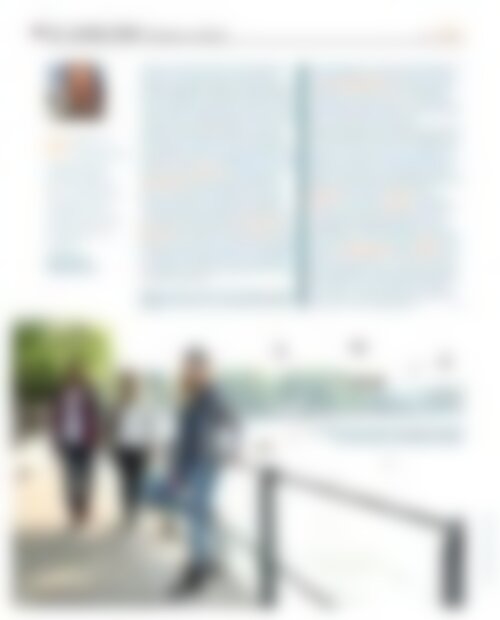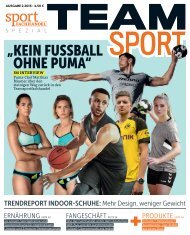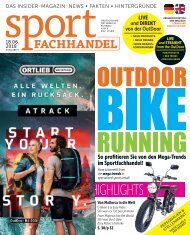sportFACHHANDEL 08_2018 Leseprobe
Sie wollen auch ein ePaper? Erhöhen Sie die Reichweite Ihrer Titel.
YUMPU macht aus Druck-PDFs automatisch weboptimierte ePaper, die Google liebt.
18 | COVER STORY | Brands vs. Retail 8.<strong>2018</strong><br />
We do not<br />
notice that the<br />
really big sports<br />
goods producers<br />
have changed their<br />
strategies in any<br />
manner, due to the<br />
amalgamation of<br />
retailers.«<br />
Matthias Wanner,<br />
Head of Sales Lowa<br />
grown over years will almost inevitably fall by the<br />
wayside. At the same time, even much smaller<br />
providers copy these strategies. Nowadays, there is a<br />
myriad of flagship stores and own online platforms.<br />
At first, the producers rejected the objections of the<br />
retailers with the argument that, in the end, the own<br />
retail activities would strengthen the brand in total<br />
and thus, also the retailers. However, they often<br />
omitted that the specialist retail has to cope with<br />
less customers, not least, due to this development.<br />
Frequently, the persons in charge mention another<br />
point in this respect, at least off the record: for retail<br />
formats such as Amazon in the online business<br />
or Décathlon in stationary trade, ultimately, it<br />
does not count which brands generate the sales.<br />
The main target is that the goods are sold quickly<br />
and most brands are indeed interchangeable,<br />
according to this philosophy. Both German retailer<br />
associations of the sports sector, Sport 2000 and<br />
Intersport, have to put up with the reproach to act<br />
this way as well. They are accused to have damaged<br />
the image of many brand products by creating their<br />
own brands. The Intersport own brand, McKinley<br />
for example, is by far the strongest outdoor brand of<br />
the retailer association.<br />
With the aim to stay on eye level with the sports<br />
groups, the traders are increasingly establishing<br />
large conglomerates as well. The latest example for<br />
it is the strategic partnership between Intersport<br />
and the Signa Sports Group. The objective of the<br />
cooperation is, on the one hand, to act together<br />
on the purchase market and, on the other hand, to<br />
bundle the purchasing volumes, in order to achieve<br />
better conditions from the providers.<br />
Ultimately, the sports shops cannot (not yet) survive<br />
without the big brands, since the demand and the<br />
expectations of the customers are too high. On the<br />
long term, the question is, however, whether the<br />
established cooperative relationships between the<br />
medium-sized providers and the sports retailers<br />
will not be destroyed in the squabbling between the<br />
big players from industry as well as trade.<br />
Jan Lorch, Head of Sales, Vaude, for example,<br />
considers the concentration process on both sides<br />
as “categorically negative development”, since<br />
it strengthens the negotiating power of the big<br />
retail customers. "We notice more pressure on the<br />
conditions and services which we have to provide",<br />
he reports. Otto Leodolter, CEO of Löffler, is also<br />
familiar with this problem, "The concentration on<br />
fewer brands results in more competition. Brands<br />
such as Löffler have to pay attention to all distribution<br />
channels – even more than before. Furthermore,<br />
we have to demonstrate great commitment<br />
in all areas. It is not enough anymore<br />
>>><br />
The strongest outdoor brand in the buying group: McKinley<br />
secures the margins for many Intersport members<br />
PHOTOS: WWW.BOPICTURE.DE, LOWA
















